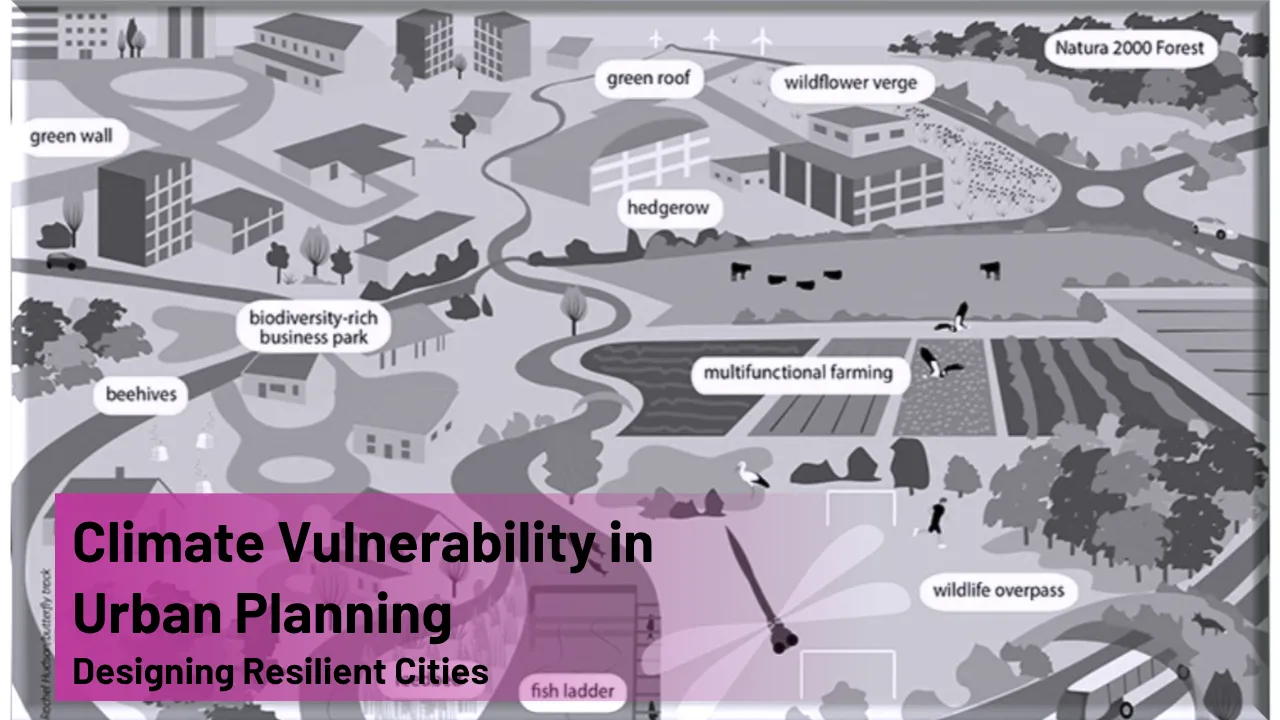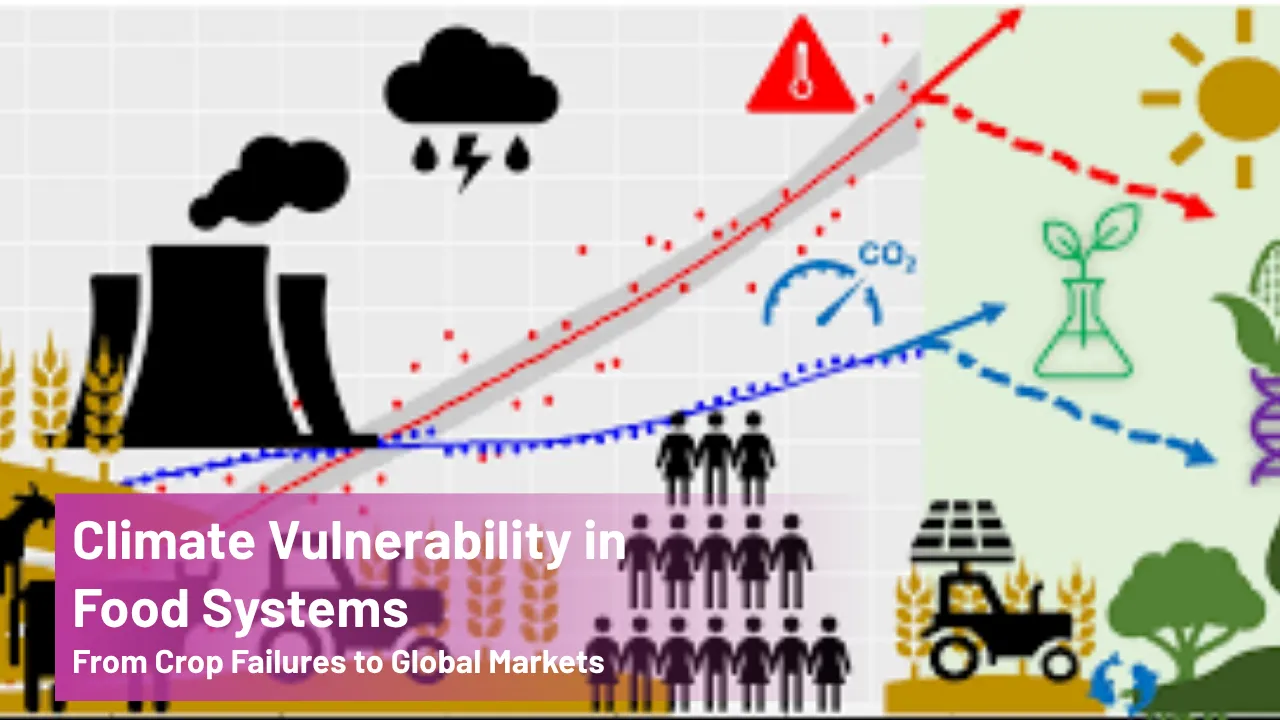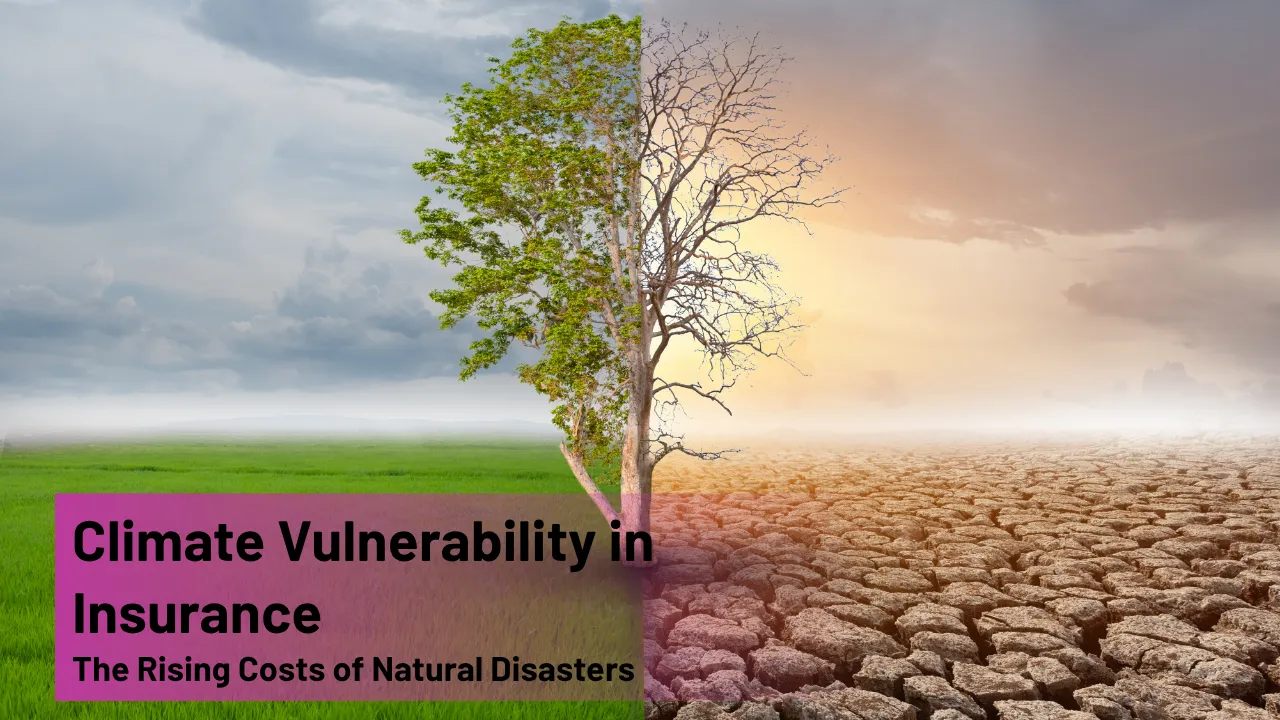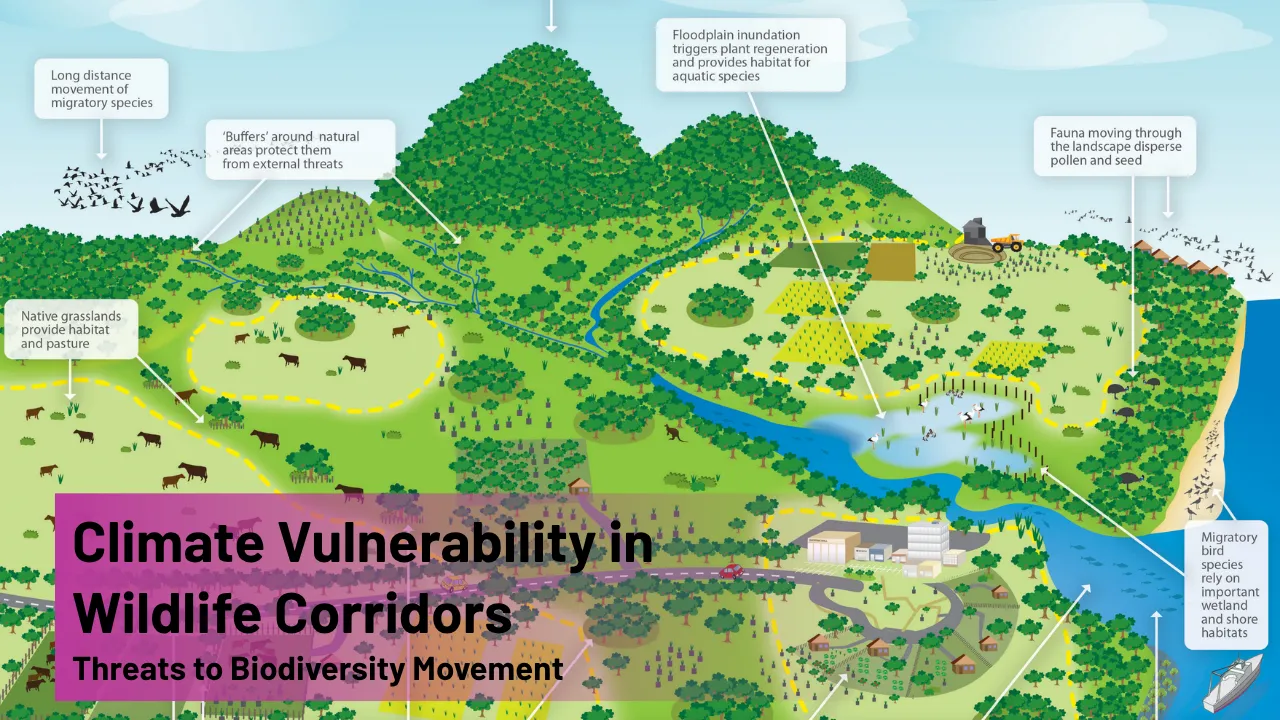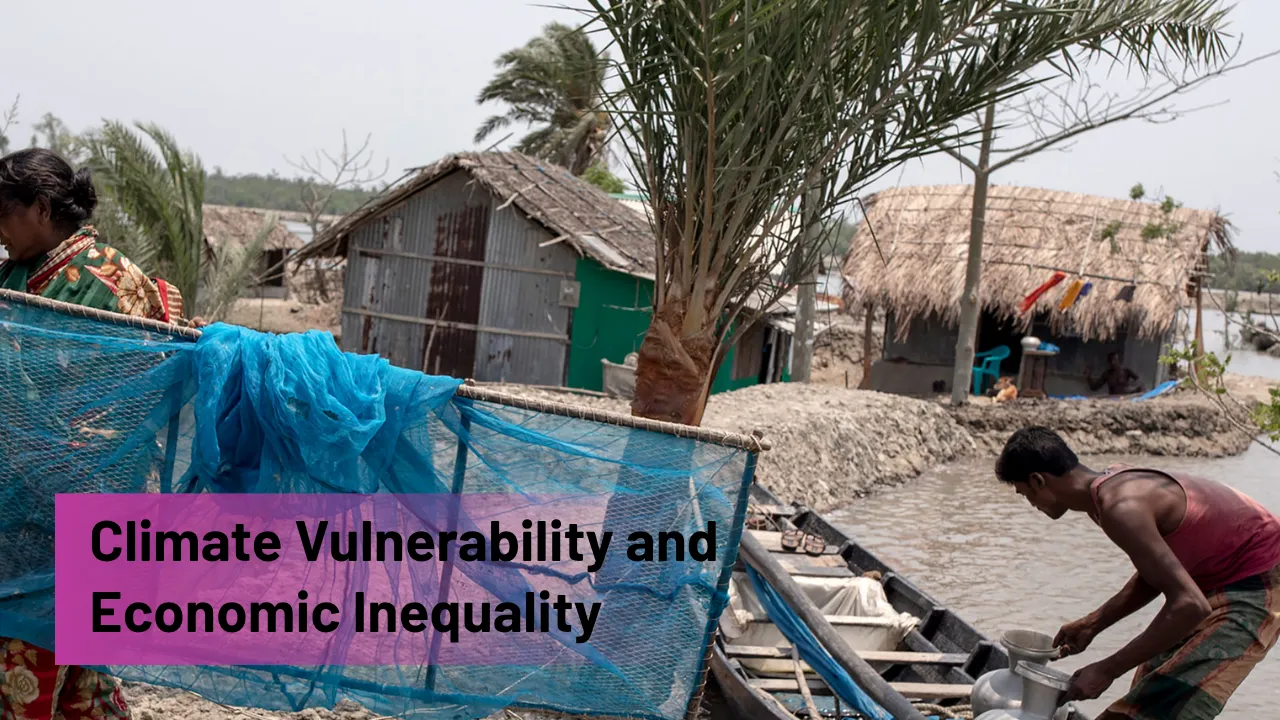Climate Vulnerability in Urban Planning: Climate Vulnerability in Urban Planning is no longer a concept confined to academic discussions or long-term policy agendas. It’s a daily reality for urban communities across the globe. As temperatures rise, sea levels increase, and extreme weather events become more frequent, cities are finding themselves at the frontline of climate-related challenges. Urban areas, with their dense populations and vast infrastructure, are especially vulnerable to environmental shifts that threaten safety, functionality, and quality of life.
This article explores the complex intersection of climate vulnerability and city design, offering a practical guide to creating resilient cities that can adapt and thrive in an unpredictable climate future. You’ll discover key strategies for reducing risks, enhancing infrastructure resilience, and integrating climate adaptation into everyday urban planning. Through real-world examples and proactive planning approaches, this guide provides a detailed look at how cities can transform their vulnerabilities into opportunities for sustainable growth.
Climate Vulnerability in Urban Planning
Climate Vulnerability in Urban Planning refers to the degree to which urban environments are exposed and sensitive to climate change impacts, combined with their ability to cope with those impacts. This includes physical exposure to environmental risks like flooding, drought, or heatwaves, and socio-economic factors that affect how communities respond. Planning cities without accounting for climate hazards increases their vulnerability, while smart and adaptive planning reduces it. A climate-resilient city isn’t one that avoids all risks, but one that prepares, adapts, and continues to function effectively under pressure. Addressing climate vulnerability at the planning stage ensures that cities remain livable, sustainable, and equitable for future generations.
Overview of Climate Risks in Urban Areas
| Climate Threat | Urban Impact | Planning Solution |
| Flooding | Property damage, transport shutdowns | Green infrastructure, stormwater systems |
| Heatwaves | Health issues, energy strain | Urban cooling, tree canopy expansion |
| Sea level rise | Coastal erosion, displacement | Coastal barriers, zoning regulations |
| Drought | Water shortages, ecosystem stress | Smart water use, permeable landscapes |
| Extreme storms | Infrastructure damage, power outages | Resilient buildings, early warning systems |
Understanding Climate Vulnerability in Cities
Cities are not all equally vulnerable to climate change. Factors like geography, population density, infrastructure age, and social inequality play huge roles in determining how a city can withstand and recover from climate events. Low-lying coastal areas, for example, are naturally more exposed to sea-level rise and storm surges, while inner cities with limited green space face higher risks from extreme heat.
The most vulnerable communities are often those with the fewest resources to recover—low-income neighborhoods, elderly populations, and those with limited access to healthcare or transportation. In urban planning, addressing climate vulnerability means recognizing these disparities and designing inclusive solutions that provide protection for everyone. Integrating urban resilience into development frameworks allows cities to better prepare for future challenges.
Key Elements of Resilient Urban Planning
Effective urban planning for climate resilience starts with identifying areas of risk and proactively redesigning them to reduce exposure. This includes evaluating building codes, revising land-use policies, and enforcing zoning that discourages development in high-risk areas. Building resilience also means investing in infrastructure that performs well under stress—whether it’s storm drains that handle more rainfall, or transit systems that stay functional during emergencies.
Planners must embrace sustainable urban design principles, ensuring that every development, renovation, or expansion contributes positively to long-term resilience. Multi-functional infrastructure—such as parks that serve as flood zones or green roofs that lower building temperatures—is key to combining utility with sustainability. A city’s layout should enhance not only its beauty and functionality, but also its ability to cope with the unpredictable.
Climate-Smart Infrastructure
Infrastructure is at the heart of any climate adaptation plan. Roads, bridges, utilities, and transit lines must be engineered for durability in a warming world. In areas prone to floods, for example, elevating roads or constructing permeable pavement allows water to drain quickly and reduces long-term damage. Where extreme heat is common, building materials that reflect sunlight and reduce the heat island effect can protect public health and reduce energy consumption.
Investment in climate-smart infrastructure isn’t only about new construction. Upgrading existing systems—sewage, power grids, drainage channels—is equally important. Monitoring technologies and predictive analytics can help detect failures before they occur, enhancing infrastructure resilience. These efforts not only protect assets but also boost public confidence in the city’s ability to function during crises.
Green and Blue Urban Solutions
Nature-based solutions are proving highly effective in urban climate planning. Green infrastructure—such as vegetated swales, green roofs, rain gardens, and tree-lined streets—helps absorb excess rainwater, reduce temperatures, and support biodiversity. These elements work alongside traditional systems to enhance resilience while improving overall livability.
Blue infrastructure refers to the strategic use of water features, such as retention ponds, constructed wetlands, or restored riverbanks, to manage floodwaters and preserve natural water cycles. In cities facing both water shortages and flood risks, the integration of green and blue infrastructure helps balance water supply and demand while protecting the urban environment.
List of Urban Planning Strategies to Reduce Climate Vulnerability
- Implementing Green Infrastructure:
- Install urban parks, rain gardens, and green rooftops to cool cities and reduce flood risk.
- Promote street tree programs to provide shade and improve air quality.
- Install urban parks, rain gardens, and green rooftops to cool cities and reduce flood risk.
- Using Risk Mapping and Zoning:
- Conduct hazard mapping to identify areas prone to floods, fires, and heatwaves.
- Update zoning laws to restrict development in high-risk zones or require adaptive designs.
- Conduct hazard mapping to identify areas prone to floods, fires, and heatwaves.
Community Engagement and Education
The success of any urban resilience strategy depends on public awareness and participation. When communities are involved in planning, the solutions become more grounded, equitable, and effective. Civic engagement ensures that vulnerable voices are heard and that proposed interventions truly reflect local needs.
Educational campaigns, workshops, and public planning sessions help spread information about climate adaptation strategies and build collective responsibility. Encouraging residents to take part in tree planting, rainwater harvesting, and energy-saving programs creates a culture of resilience from the ground up.
Real-World Examples of Resilient Cities
Some cities have already made significant progress in designing for climate resilience. Rotterdam has become a global leader by integrating water plazas, floating buildings, and adaptive dikes into its urban design. Singapore’s commitment to becoming a “City in a Garden” features vertical greenery and integrated stormwater systems that enhance cooling and water management.
In the U.S., New York City’s post-Hurricane Sandy plans include elevated buildings, improved drainage, and robust coastal defenses. These cities are not only adapting but innovating, setting examples for how others can address climate vulnerability in urban planning with bold, practical actions.
The Role of Policy and Funding
Transforming a city into a climate-resilient space requires more than good ideas—it needs supportive policies and steady funding. Urban governments must adopt planning policies that prioritize long-term environmental health, equitable access to resources, and investment in resilient systems. This includes disaster preparedness plans, building codes for extreme weather, and incentives for sustainable construction.
Public-private partnerships can provide the financial muscle to scale up solutions. Funding should also target under-resourced communities, ensuring that climate resilience is not just for the wealthy but a shared priority across the entire city.
FAQs
What is climate vulnerability in urban planning?
It is the risk cities face when urban development doesn’t take climate change impacts like flooding or heat into account, increasing exposure to harm.
How can cities reduce their climate vulnerability?
By investing in green infrastructure, updating building codes, using data-driven risk maps, and involving communities in climate planning.
What are examples of green infrastructure in cities?
Green roofs, rain gardens, urban forests, and permeable pavements that manage water and reduce heat.
Why is zoning important for climate resilience?
Proper zoning prevents construction in flood-prone or high-risk areas, reducing property damage and disaster losses.
What is the role of communities in climate adaptation?
Engaged communities help shape better plans, increase awareness, and ensure solutions are inclusive and practical.
Conclusion
Climate Vulnerability in Urban Planning isn’t a problem of tomorrow—it’s a reality today. Cities must act fast to integrate resilience into every aspect of development, from building codes to transport systems and green space planning. By combining smart infrastructure, nature-based solutions, community engagement, and supportive policies, cities can not only reduce their risks but also improve quality of life for all residents. Resilience is not just about bouncing back—it’s about moving forward stronger, smarter, and more connected to the environment.
If this article gave you new insights, feel free to comment below or share it with others who care about the future of our cities. Explore more content on how your city ranks in climate resilience or learn how you can be part of the solution in your neighborhood.
